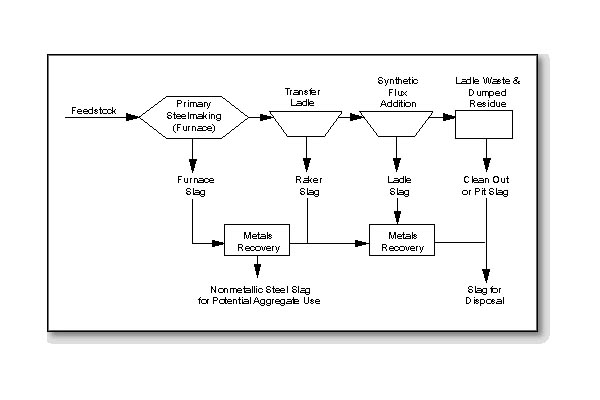15 Oct,2019 UTC+8 Views:
Steel slag, it is a by-product of steel making, which is produced during the separation of the molten steel from impurities in steel-making furnaces. The slag occurs as a molten liquid melt and is a complex solution of silicates and oxides that solidifies upon cooling.
Virtually all steel is now made in integrated steel plants using a version of the basic oxygen process or in specialty steel plants using an electric arc furnace process. The open hearth furnace process is no longer used.
In the basic oxygen process, hot liquid blast furnace metal, scrap, and fluxes, which consist of lime (CaO) and dolomitic lime (CaO.MgO or "dolime"), are charged to a converter . A lance is lowered into the converter and high-pressure oxygen is injected. The oxygen combines with and removes the impurities in the charge. These impurities consist of carbon as gaseous carbon monoxide, and silicon, manganese, phosphorus and some iron as liquid oxides, which combine with lime and dolime to form the steel slag. At the end of the refining operation, the liquid steel is tapped (poured) into a ladle while the steel slag is retained in the vessel and subsequently tapped into a separate slag pot.

There are many grades of steel that can be produced, and the properties of the steel slag can change significantly with each grade. Grades of steel can be classified as high, medium, and low, depending on the carbon content of the steel. High-grade steels have high carbon content. To reduce the amount of carbon in the steel, greater oxygen levels are required in the steel-making process. This also requires the addition of increased levels of lime and dolime (flux) for the removal of impurities from the steel and increased slag formation.
There are several different types of steel slag produced during the steel-making process. These different types are referred to as furnace or tap slag, raker slag, synthetic or ladle slags, and pit or cleanout slag.
The steel slag produced during the primary stage of steel production is referred to as furnace slag or tap slag. This is the major source of steel slag aggregate. After being tapped from the furnace, the molten steel is transferred in a ladle for further refining to remove additional impurities still contained within the steel. This operation is called ladle refining because it is completed within the transfer ladle. During ladle refining, additional steel slags are generated by again adding fluxes to the ladle to melt. These slags are combined with any carryover of furnace slag and assist in absorbing deoxidation products (inclusions), heat insulation, and protection of ladle refractories. The steel slags produced at this stage of steel making are generally referred to as raker and ladle slags.
Pre: Viewing the advantages of vertical mill from the development of steel slag grinding equipment
Next: Chaeng will participate in the 32nd International Mining Exhibition, Acapulco, Mexico